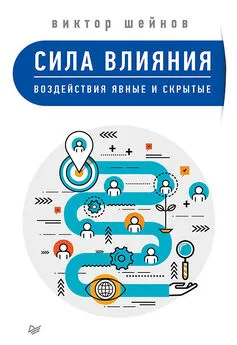Виктор Шейнов - Юмор как способ влияния
- Название:Юмор как способ влияния
- Автор:
- Жанр:
- Издательство:Издательство «Питер»046ebc0b-b024-102a-94d5-07de47c81719
- Год:2016
- Город:Санкт-Петербург
- ISBN:978-5-496-01271-3
- Рейтинг:
- Избранное:Добавить в избранное
-
Отзывы:
-
Ваша оценка:
Виктор Шейнов - Юмор как способ влияния краткое содержание
Лучшее средство убеждения – это юмор. С помощью удачной шутки или забавной истории удается склонить на свою сторону самого грозного оппонента и с честью выйти из любой трудной ситуации.
Люди обычно благодарны тем, кто поднял им настроение, более доброжелательно к ним относятся, готовы пойти навстречу во многом. А кроме того, при смехе активизируются отделы мозга, отвечающие за творческие решения, человек шире смотрит на ситуацию и быстрее находит удачное решение проблемы.
Эта замечательная книга научит вас применять юмор как средство влияния и защиты. В ней есть все – психологические приемы, хитроумные подсказки, а также шутки и смешные истории, вооружившись которыми вы сможете с успехом не только убеждать людей, но и защищаться от самых умелых манипуляций.
Юмор как способ влияния - читать онлайн бесплатно ознакомительный отрывок
Интервал:
Закладка:
22. Шейнов В. П. Психологическое влияние (2-е изд.). – Минск, 2007.
23. Шибутани Т. Социальная психология. – Ростов н/Д., 1998.
24. Aronson Е., Wilson Т., Akert R. Social Psychology. – N. Y., 2002.
25. Baron R., Byrne D., Jonson B. Exploring Social Psychology (Fourth edition). – Boston, 1998.
26. Berlyne D. E. Laughter, humor, and play. In G. Lindzey E. Aronson (Eds.), The handbook of social psychology, 1969 (2nd., Vol.3, pp. 795852). Reading, MA: Addison-Wesley.
27. Conway M., Dube L. Humor in persuasion on threatening topics: Effectiveness is a function of audience sex role orientation. Personality & Social Psychology Bulletin, 2002, 28 (7), 863–873.
28. Dixon N. F. Humor: A cognitive alternative to stress? In I. G. Sarason & C. D. Spielberger (Eds.), Stress and anxiety (Vol. 7, pp. 281–289). Washington, DC: Hemisphere, 1980.
29. Duncan С. P., Nelson J. E. Effect of humor in a radio advertising experiment. Journal of Advertising, 1985, 14 (2), 33–40.
30. Fredrickson B. L. What good are positive emotions? Review of General Psychology, 1998, 2(3), 300–319.
31. Fredrickson B. L. The role of positive emotions in positive psychology: The broaden-and-build theory of positive emotions. American Psychologist, 2001, 55(3), 218–226.
32. Fredrickson B. L., Branigan C. Positive emotions broaden the scope of attention and thought-action repertoires. Cognition ir Emotion, 2005, 19(3), 313–332.
33. Fredrickson B. L., Mancuso R. A., Branigan C., Tugade M. M. The undoing effect of positive emotions. Motivation and Emotion, 2000,
24(4), 237–258.
34. Gervais M., Wilson D. S. The evolution and functions of laughter and humor: A synthetic approach. Quarterly Review of Biology, 2005. 80 (4), 395–430.
35. Gueguen N. Psychologie de la manipulation et de la soumission. – Dunod., Paris, 2002.
36. Jones E. E., Wortman C. Ingratiation: An attritional approach. – Morristown, 1973.
37. Jones J. A. The masking effects of humor on audience perception of message organization. International Journal of Humor Research, 2005,
18 (4), 405–417.
38. Izard K. The Psychology of Emotion. – N. Y., 1991.
39. Keltner D., Capps L., Kring A. M., Young R. C, Heerey E. A. Just teasing: A conceptual analysis and empirical review. Psychological Bulletin,
2001. 127(2), 229–248.
40. Kenrick D., Neuberg S., Cialdini R. Social Psychology, Boston, 2002.
41. Lyttle J. The effectiveness of humor in persuasion: The case of business ethics training. Journal of General Psychology, 2001, 128 (2), 206–216.
42. Madden T. J., Weinberger M. G. The effects of humor on attention in magazine advertising. Journal of Advertising, 1982, 11 (3), 8—14.
43. Martin R. A. Psychology of Humor: An Integrative Approach. – Oxford, Elsevier Ins., 2007. [2]
44. Mulkay M. On humor: Its nature and its place in modern society. NewYork: Basil Blackwell, 1988.
45. Myers D. Social Psychology. – N. Y., 2002.
46. O’Quin K., Aronoff J. Humor as a technique of social influence. Social Psychology Quarterly, 1981, 44 (4), 349–357.
47. Panksepp J. The riddle of laughter: Neural and psycho evolutionary under-pinning of joy. Current Directions in Psychological Science, 2000, 9(6), 183–186.
48. Petty R. E., Cacioppo J. T. The effects of issue involvement on responses to argument quantity and quality: Central and peripheral routes to persuasion. Journal of Personality and Social Psychology, 1984, 46, p. 69–81.
49. Taylor Sh., Peplou L., Sears D. Social Psychology. – N. Y., 2002.
50. Verderber R., Verderber К. Communicate Tenth edition, Wadsworth, Us, 2002.
51. Weinberger M. G., Gulas C. S. (1992). The impact of humor in advertising: A review. Journal of Advertising, 27(4), 35–59.
Примечания
1
NN – автор высказывания не установлен. – Примеч. авт.
2
Книга Рода Мартина вышла на русском языке под названием «Психология юмора» в 2009 г. (Примеч. ред.).
Интервал:
Закладка:
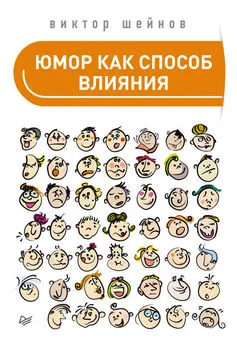



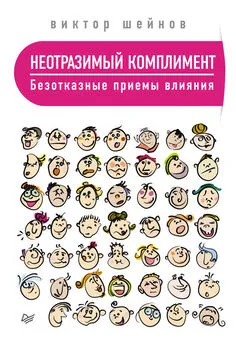
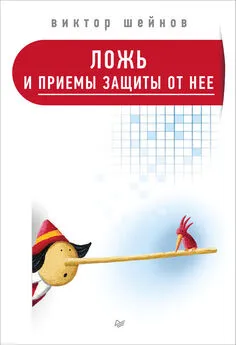
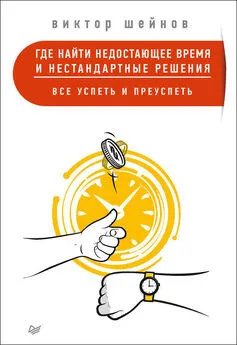


![Виктор Шейнов - Развиваем мышление, сообразительность, интеллект [Книга-тренажер]](/books/1073460/viktor-shejnov-razvivaem-myshlenie-soobrazitelnost-intellekt-kniga-trenazher.webp)
